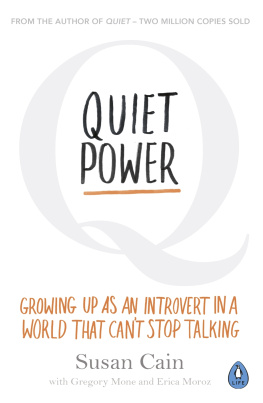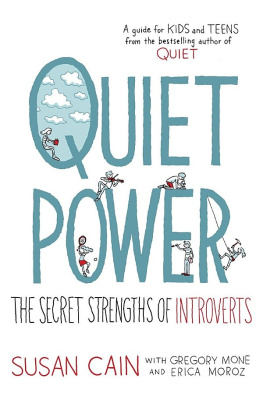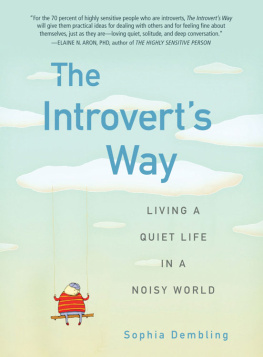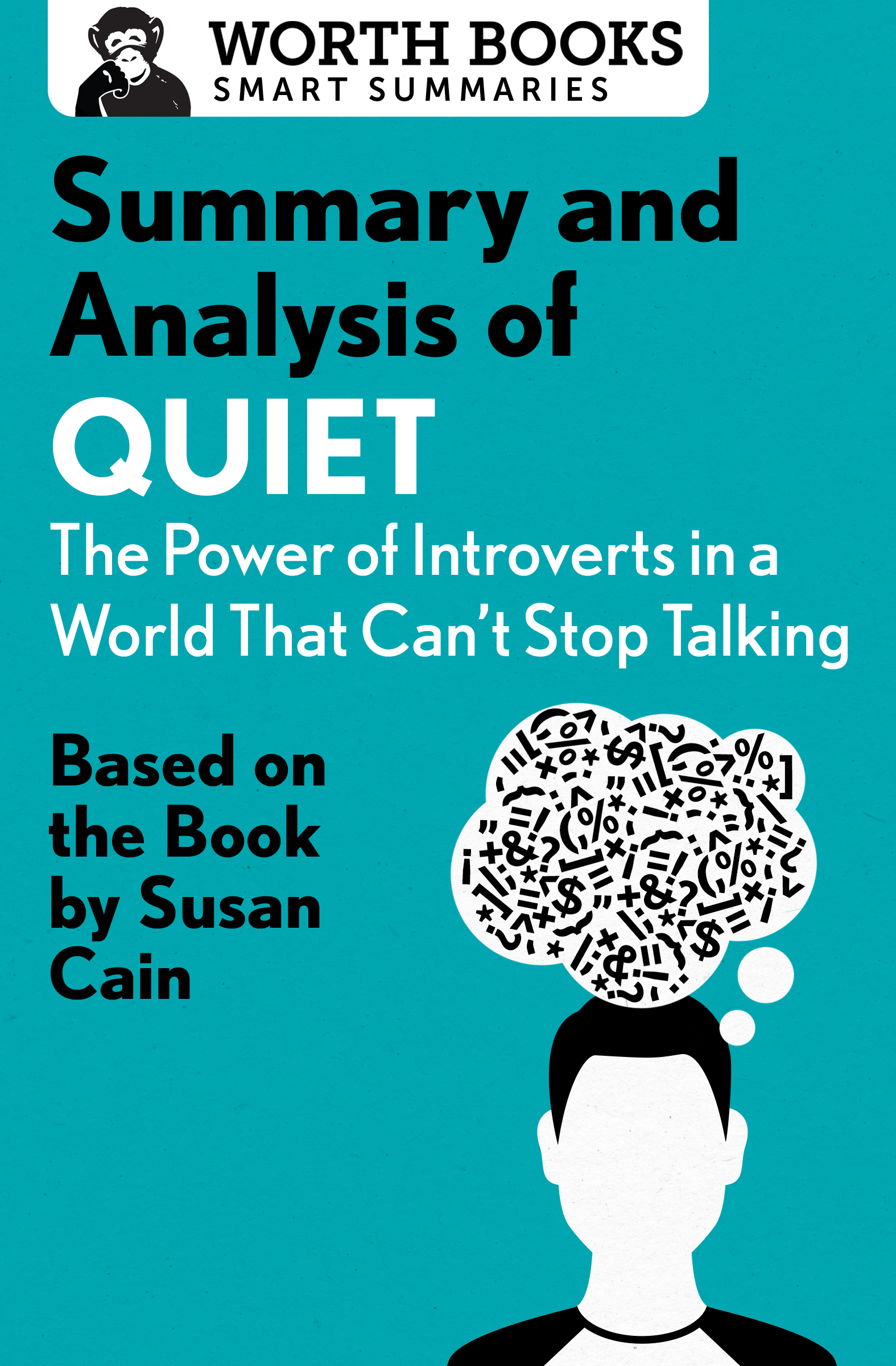Summary and Analysis of
Quiet
The Power of Introverts in a World That Cant Stop Talking
Based on the Book by Susan Cain

Contents
Context
Author Susan Cain maintains that she didnt set out to start a revolution, but when her book Quiet: The Power of Introverts in a World That Cant Stop Talking was published in 2012, and she embarked on her first global book tourgiving more than three hundred media interviews and countless speechesit became readily apparent that the revolution was fully underway. Until Cain came along, introverts, with their tendencies toward quiet introspection and meaningful conversations, were considered somewhat less than effective at navigating life. In a society enthralled with gregarious, outspoken, larger-than-life extroverts, being an introvert was not considered to be an enviable quality. Introverts were often overlooked for promotions at work, thought of as antisocial, and even considered incompetent by some.
It would take seven years before Cains initial work would hit the bookstores. Her in-depth research and personal connection to the material proved to be a winning combination. Translated into forty languages, Quiet has remained on the New York Times bestseller list for more than four years and garnered Cain a Time magazine cover story.
Cains record-breaking 2012 TED Talk on The Power of Introverts has been viewed more than fifteen million times to date and helped launch her public speaking career, which has included appearances at Microsoft, Google, Harvard, Yale, West Point, and more. Corporations, organizations, and executive coaches regularly rely on her research to foster well-rounded professional environments and to create pathways to a better understanding between introverts and extroverts. While certainly not the first book to look at introverts, Quiet s level of popularity would indicate that its one of the most relied-upon references.
In 2015, Cain and Paul Scibetta cofounded Quiet Revolutiona mission-based organization that seeks to change the lives of introverts the world over by empowering them with knowledge, tools, and resources to help them survive and thrive.
Overview
Susan Cains Quiet delivers a comprehensive look at introversion across personal, social, and institutional levels of society. Cain relies on firsthand experience, in-depth interviews, and extensive research to support her theories.
The book is divided into four parts. Part one focuses on the Extrovert Idealits definition, its roots, and its impacts on society, in general, and introverts, in particular. Part two takes a close look at the nature versus nurture debate as it relates to introversion and extroversion, the notion of free will, and the extent to which we have the ability to shift our temperaments. Part three digs into current trends regarding the introvert-extrovert spectrum with special focus given to examinations of Eastern culture, Western culture, and the Extrovert Ideal. And part four is all about strategies for optimizing relationships at home, at school, at work, and in the world, given our different personality types.
Summary
INTRODUCTION: THE NORTH AND SOUTH OF TEMPERAMENT
According to Susan Cain, pretty much everything in our livesfrom our relationships and our careers to our finances and even our healthis inextricably affected by where we fall on the introvert-extrovert spectrum. Reflecting on the standard definitions of introvert and extrovert , wherein introvert is defined as one who is shy, sensitive, and submissive, and extrovert is defined as one who is an outgoing, dominant risk-taker, Cain acknowledges not everyone in the research community agrees with these definitions. Nor do these terms apply to individuals in a clear-cut or consistent way.
Still, there are some things on which most psychologists would agree. For instance, most researchers contend that introverts require far less external stimulation than extroverts. Whereas introverts may be content to sit quietly reading a book or meeting up with a close friend for coffee, extroverts tend to prefer large groups of people and are far more active in their leisure-time activities.
The two also approach their work lives differently. Introverts tend to be very deliberate when tackling a project. They tend to focus on one thing at a time, methodically working their way through a task or problem that needs to be solved. Extroverts tend to dive in, work quickly, and take risks, in large part because they require more reward stimuli than introverts to achieve peak functionality.
Social style is also a good indicator of where someone sits on the introvert-extrovert scale. Extroverts love company, tend to be assertive, prefer talking to listening, and are rarely at a loss for words. Introverts, on the other hand, listen more than they talk, think before they speak, and often prefer to communicate in writing rather than in person. None of which is to say introverts lack in social skills; they simply prefer deep discussion with close friends to small talk with strangers.
Despite research demonstrating that one third to one half of Americas population is made up of introverts, we remain a nation consumed by the Extrovert Ideal: the notion that our culture, our institutions, and our personalities are better served by the gregarious, unreserved, in-your-face alpha traits of the extroverted. This thinking often keeps us from recognizing the value and the gifts of introverts. Susan Cain wants to change that.
In her work as a lawyer and a negotiation consultant, Cain helped introvertsherself includedoptimize their unique characteristics and talents to create rich, full lives.
The aim of Quiet is to clear up some of the confusion and empower introverts to be their best selves.
PART ONE: THE EXTROVERT IDEAL
1. THE RISE OF THE MIGHTY LIKEABLE FELLOW
How Extroversion Became the Cultural Ideal
The author begins our journey by tracing Americas cultural evolution at the turn of the nineteenth century, from a society in which inner morality was most highly regarded to one in which a particularly charismatic personality type was considered superiorand the Extrovert Ideal was born.
According to historian Warren Susman, we drifted from a Culture of Character into a Culture of Personality beginning in the early twentieth century. And in the process, Cain argues, we set ourselves up for a boatload of personal and social anxieties from which we would never fully recover.
In Susmans concept of a Culture of Character, the ideal self was serious, honorable, studious, and disciplined. But the urbanization of America in the early 1900s put us elbow to elbow with our neighbors: those we knew and those we didnt. Suddenly, what others thought of us seemed critical to our very existence. This led to a shift from a Culture of Character into a Culture of Personality, where the ideal self was gregarious, social, and charismatic.
Cain defines the Extrovert Ideal as the all-encompassing notion that ones ideal self is outgoing, entertaining, and always comfortable in the spotlight. She ponders the rise of the Extrovert Ideal and this cultural shift through the lens of the self-help movement, which was beginning to churn in the 1920s.
The shift in culture from a character-driven to a personality-driven landscape pushed things into high gear. Popular guides that focused on the importance of developing integrity and inner virtue were replaced by those extolling the benefits of charm and popularity. Key words found in earlier guides included: citizenship , duty , and honor . The new and improved guides used words such as fascinating , stunning , and forceful .




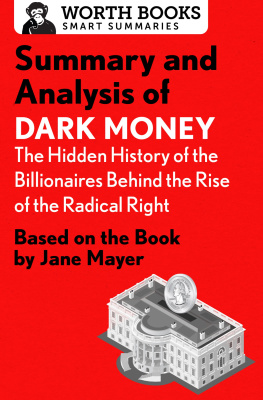



![Syuzan Kejn - Quiet [The Power of Introverts in a World That Can't Stop Talking]](/uploads/posts/book/831856/thumbs/syuzan-kejn-quiet-the-power-of-introverts-in-a.jpg)
